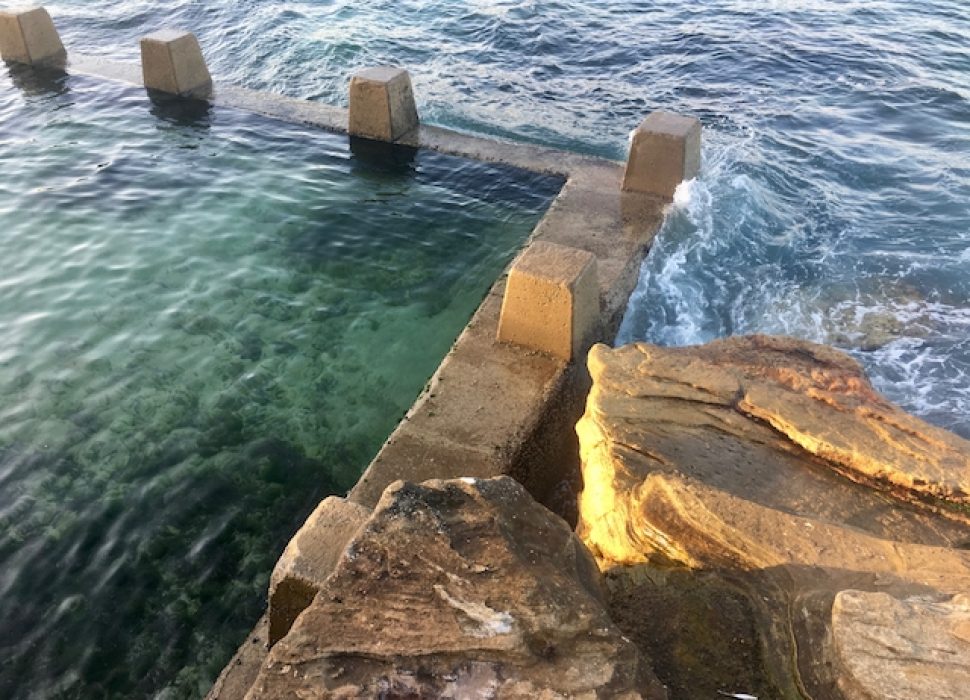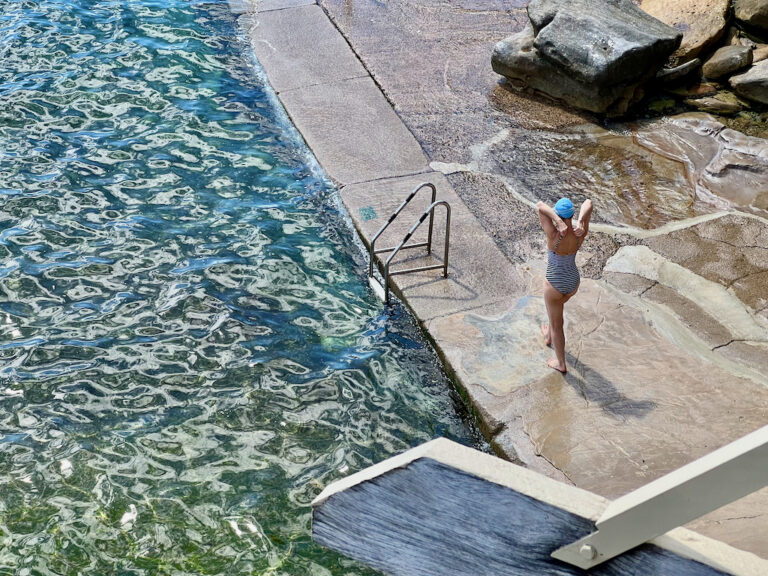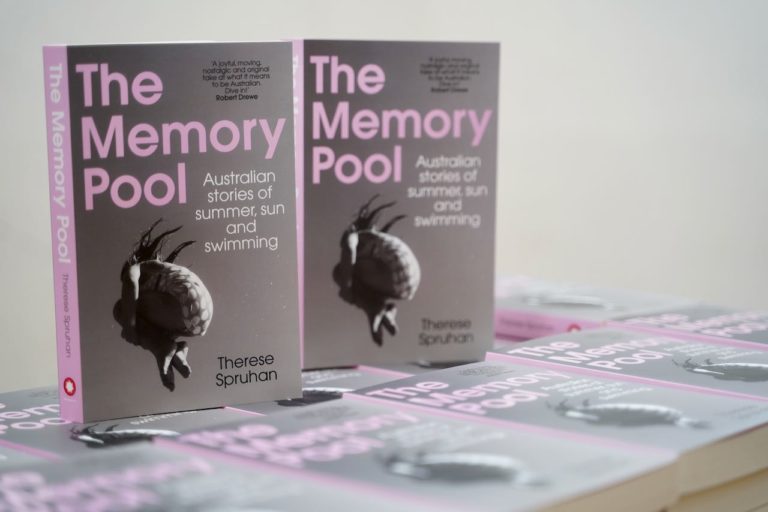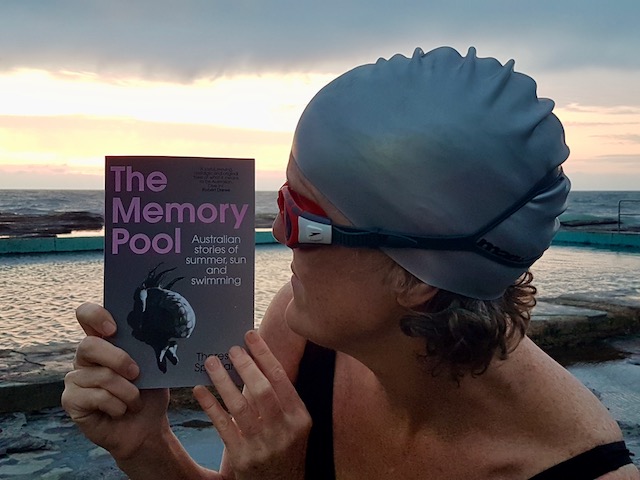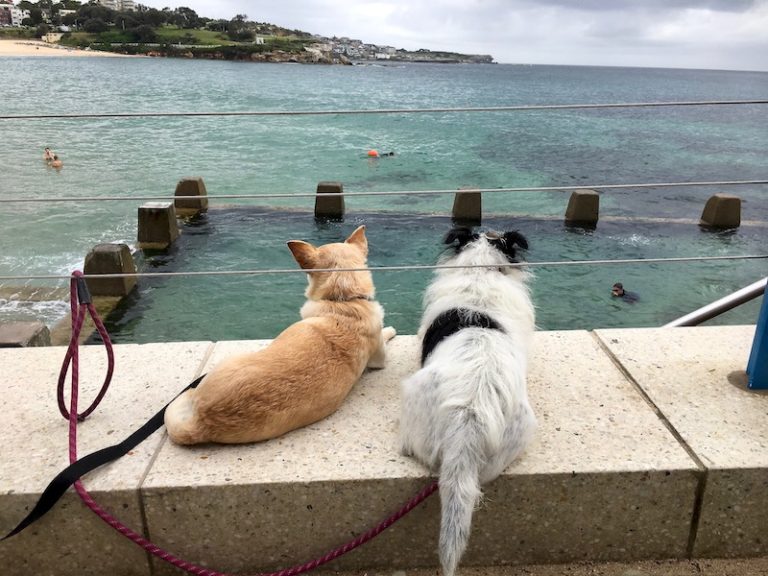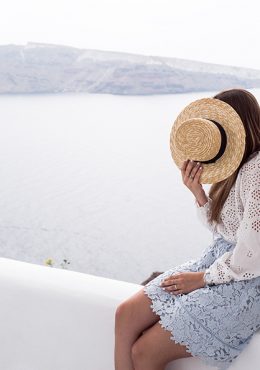As we drove to Coogee in the second week of May, Bruce asked me was there anything in particular I wanted to do while we were there.
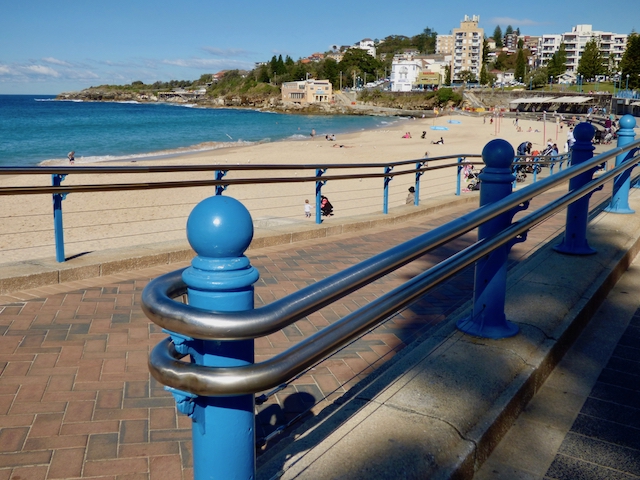
“I want to see Ivo Rowe Pool. It’s the only Coogee ocean pool I haven’t been to.”
Bruce sighed. “Of course, it had to involve a pool.”
We were staying in Coogee for one night, a treat for our wedding anniversary and just before 4 we set off on our walk towards Ivo Rowe Pool.
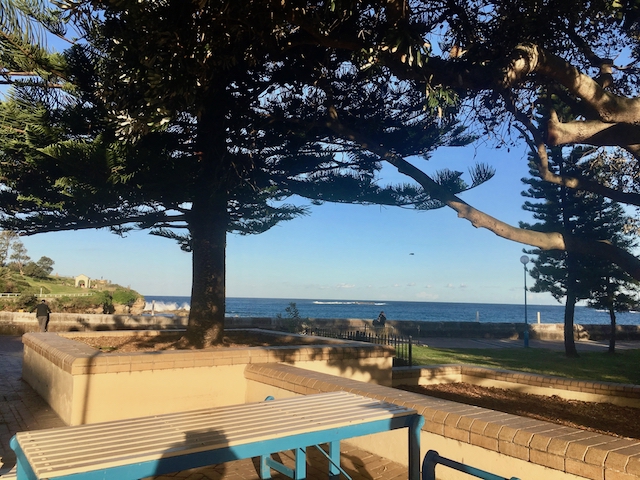
On the way to the beach, I mentioned that I wanted to drop into each of Coogee’s five ocean pools along the route.
“Of course, you do,” said Bruce.
First stop was Giles Baths, the former men’s pool at the north end of the beach where three twenty-somethings were enjoying being swamped by the waves and where late last year I spotted a blue groper when I swam there on a clear day.
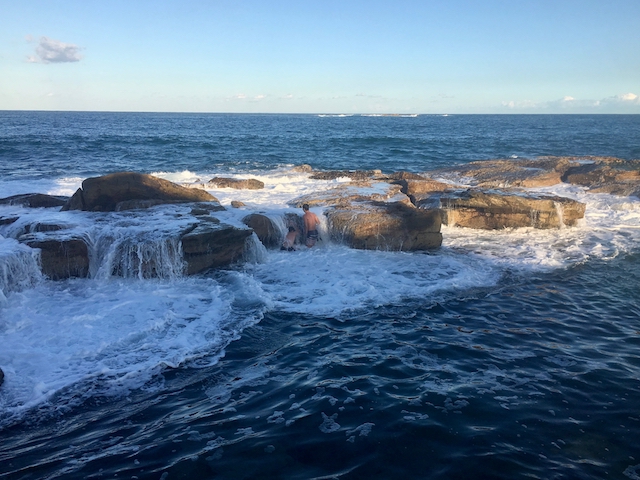
As we gazed at the spectacular sweeps of sandstone above the pool, I told Bruce how this north end was thought to be where the local Aboriginal men used to meet, fish and bathe and the south end was the women’s place.
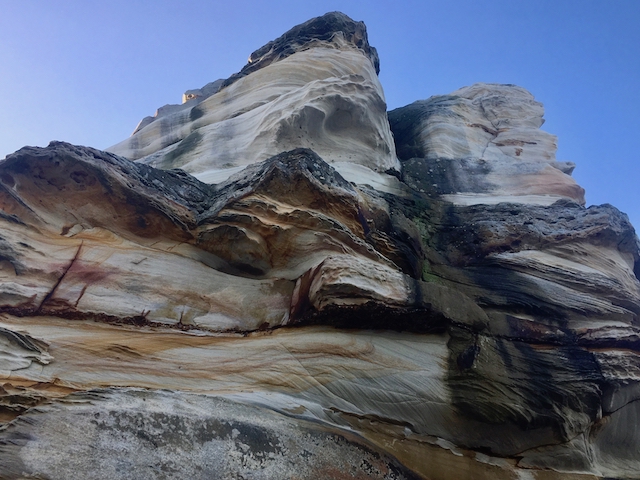
I pointed out a brick wall, remnants of when white men took over the bogey hole and told Bruce about Oscar C Giles who in 1929 opened a bath house above the natural rock pool where sportsmen, racing identities, criminals, police and well-known politicians mixed.
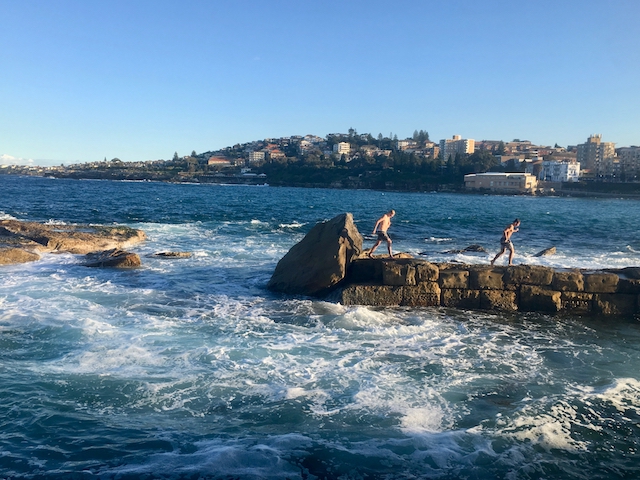
We left the boys leaping into the surging surf and walked up the steep steps to the original Giles Baths entrance, now a memorial to the Coogee people who tragically died in the Bali bombing in 2002.
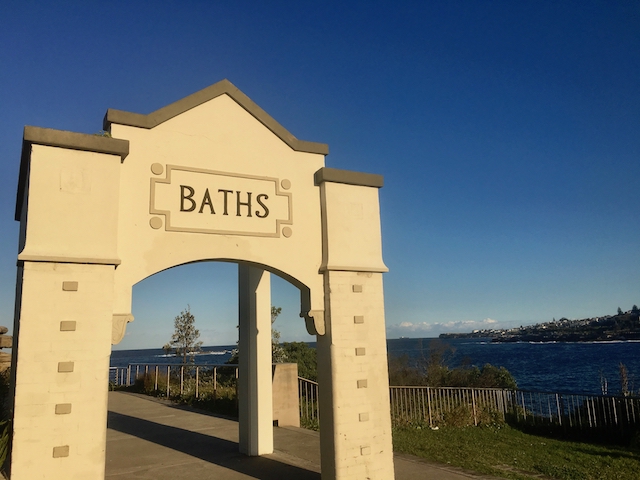
We passed the area where people claim to have seen an apparition of Mary and where 19th century artists’ Tom Roberts, Charles Conder and Arthur Streeton painted masterpieces of Coogee Beach.
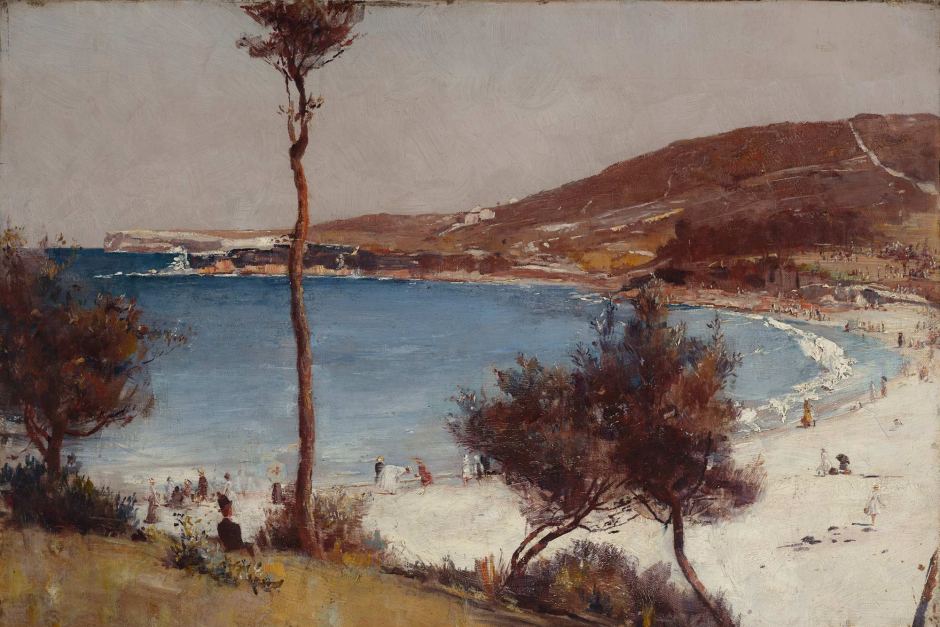
On the promenade, we read that in 1928 a pier with 1400-seat theatre, ballroom, restaurant, shops and penny arcade opened to great excitement but by 1933 the ‘aggressive Australian surf’ had knocked it into the sea.
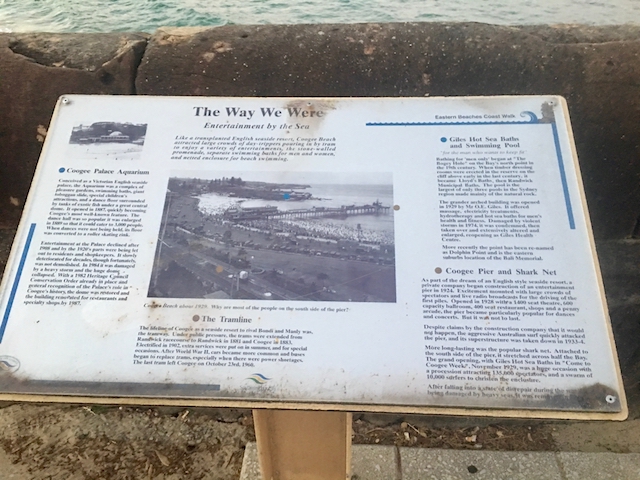
When we reached the southern part of the beach, the last of the sun was shining on the surf club above the 70-year-old Ross Jones Memorial Pool, named after a local alderman and long-time surf club committee member.
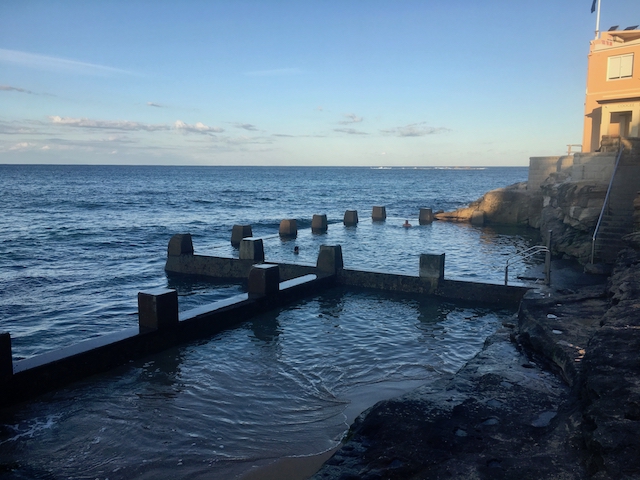
Two older people flopped around in the water as if they were soothing their limbs in a hot spa and the light cast a gold glow over the sandstone on the side of the pool.
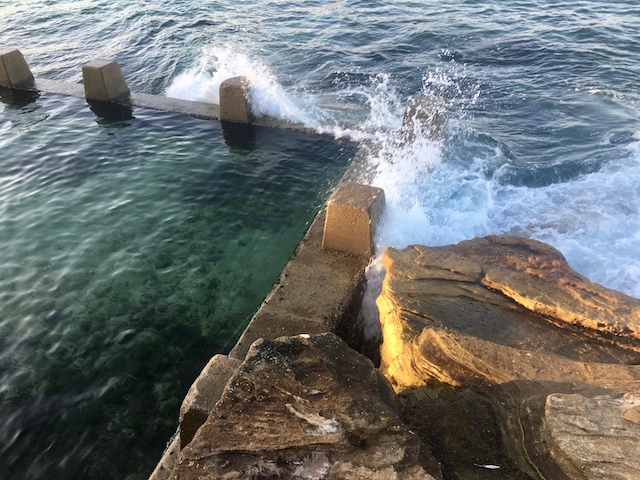
We continued south up the hill along the Eastern Beaches Coastal Walk lined with yellow banksias, coastal rosemary and correa till we reached McIver’s Ladies Baths.
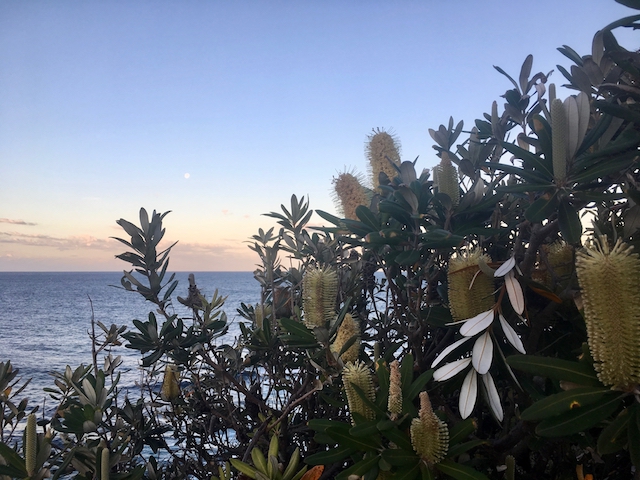
I walked down the steps into Australia’s last surviving women-only pool where one person was doing laps and another resting on a rock, like a mermaid emerged from the sea.
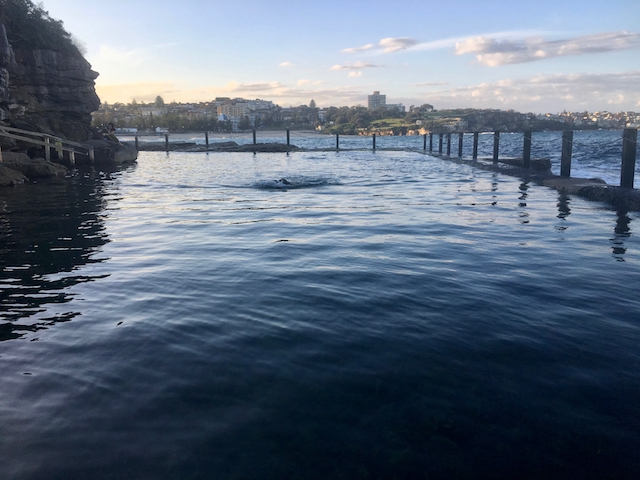
The water was see-through and the sandstone rock curved round the pool like an all-embracing hug.
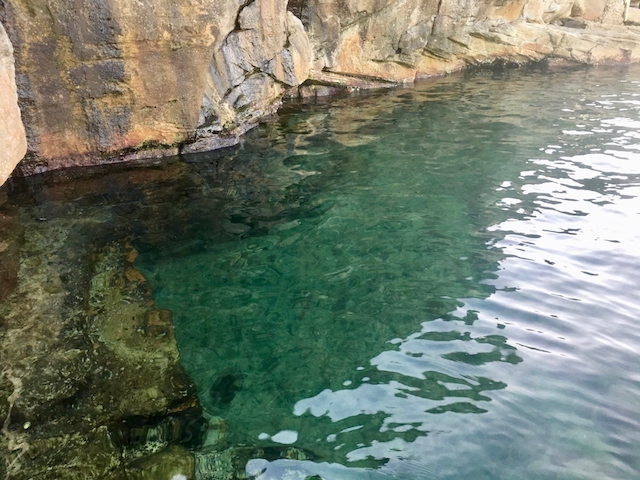
“Cold in,” I asked the woman as she got out of the water.
“No,” she said, “it’s warmer in than out.”
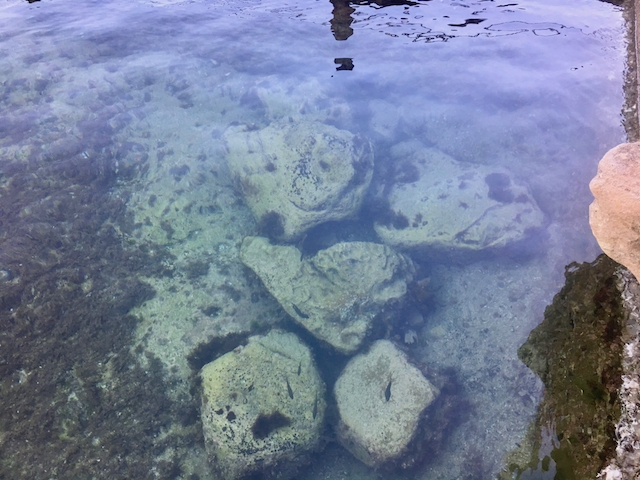
On the way out I took a photo of a single yellow flower blooming on the grass high above the pool and one of the sign saying it’s only 20 cents entry to McIver’s Ladies’ Baths.
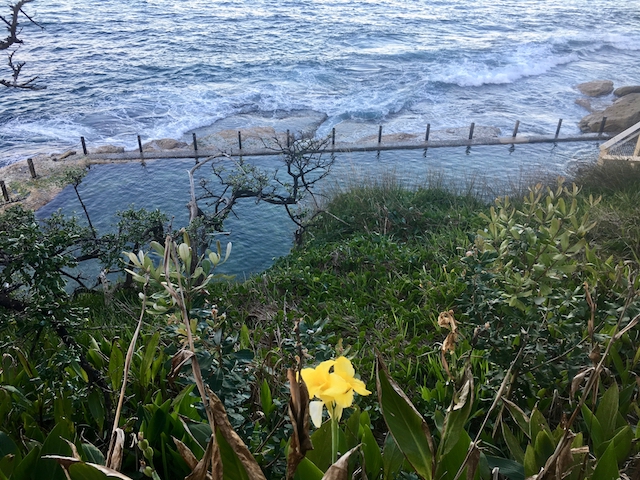
When I met up with Bruce waiting outside the pool, we continued on the path, past more yellow banksia in flower till we reached the striped entrance to Wylie’s Baths.
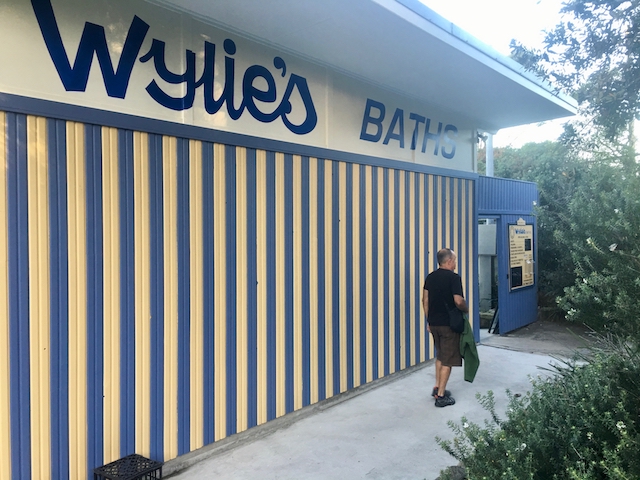
Inside, I said hello to the statue of Mina Wylie, the 1912 Stockholm Olympics swimmer, whose father Henry Wylie dug the pool out of the rock face back in 1907, and read that the water temperature was 20.7 C degree.

On the blue and yellow timber deck, I watched the incoming tide spill over the sandstone rocks and rise up as it crashed onto the concrete wall at the shallow end of the pool.
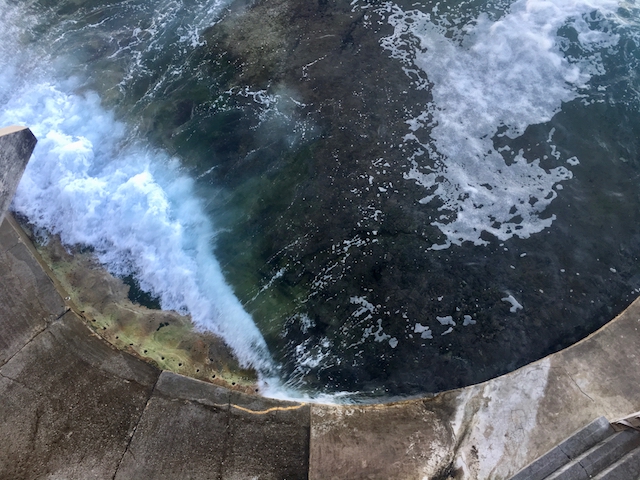
It was mesmerising watching the water and I didn’t want to leave but the light was starting to fade so it was time to press on to Ivo Rowe rock pool.
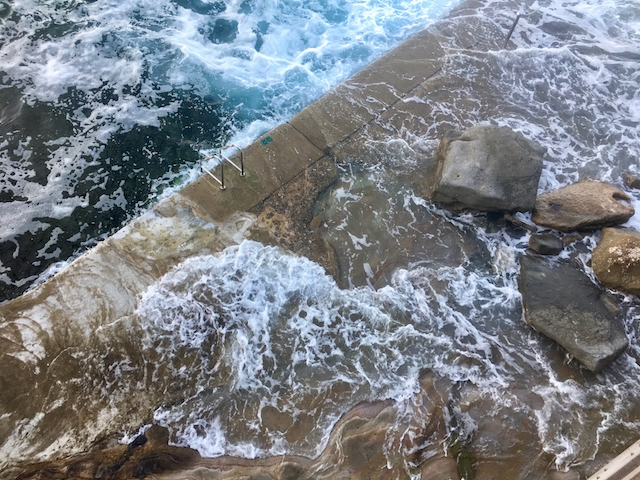
We pushed on south, past a park busy with locals exercising their dogs and on to the timber walkway by white mansions and a swamp. Frogs croaked and a rock warbler fossicked for food on the sandstone rocks, shaped and coloured by the weather and the sea.
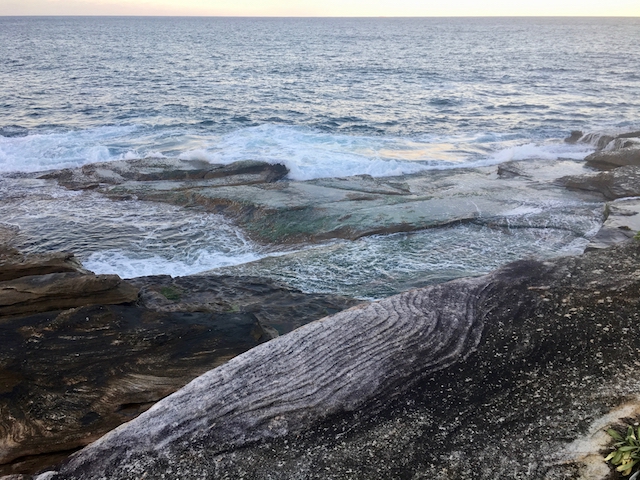
We continued around a few more bends and then we were standing above a rock platform and the Ivo Rowe Pool.
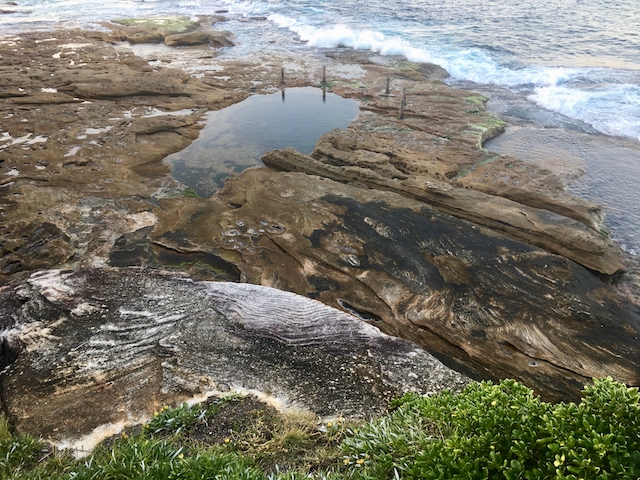
“Isn’t it lovely,” I said and raced down the stairs to get closer. The sky was starting to turn pink and as I walked around the edge, Bruce said he’d read on the sign above that in 1965 the pool was enlarged by filling a channel through the edge.
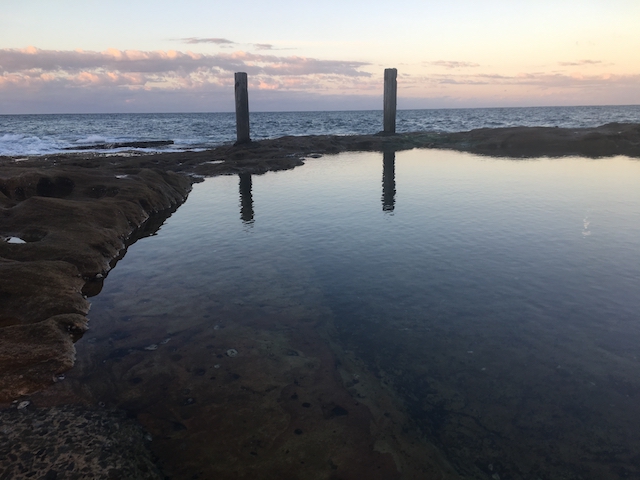
I took photos of the sandstone turning green in spots and watched the waves rise up and crash over the rocks.
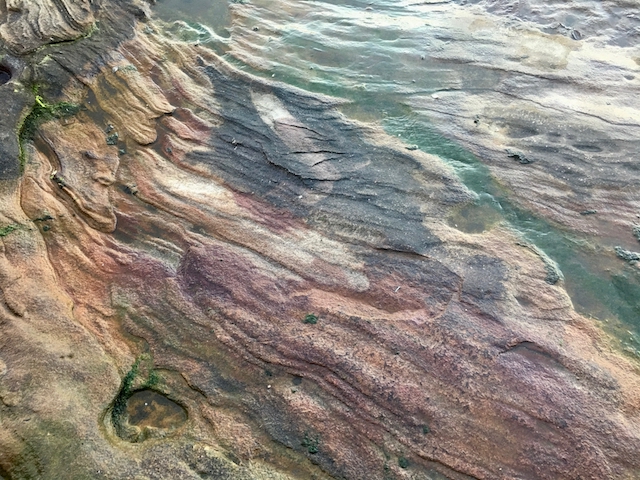
When we walked back up the stairs a sign said two fishermen had been killed at this spot and people were warned to be careful when the tide was high.
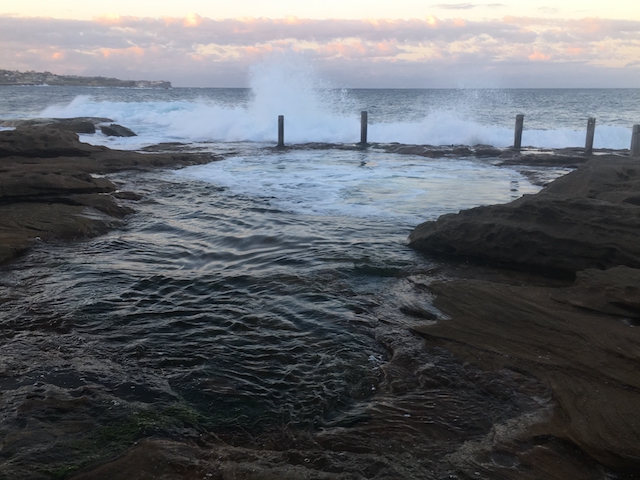
Then I read the story of the Ivo Rowe Pool, how it was named after a local identity and it was the largest teardrop-shaped pool on a platform of potholes and pools.
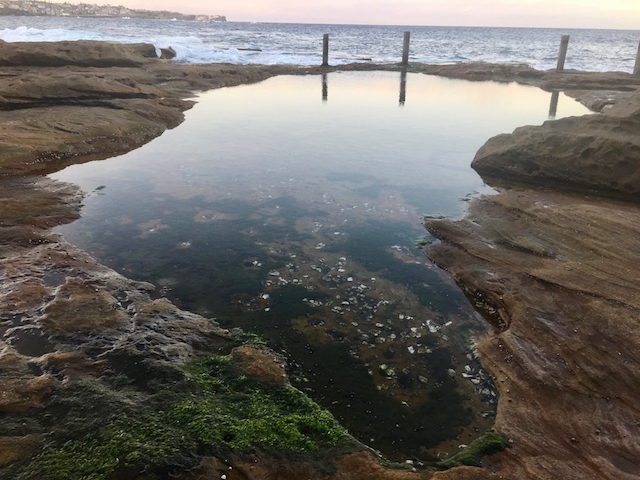
As we walked away, Bruce said, “Happy now you’ve seen it.”
“Yes,” I said, “and now I think I’d like to live in Coogee so I could swim at all its gorgeous ocean pools.”

